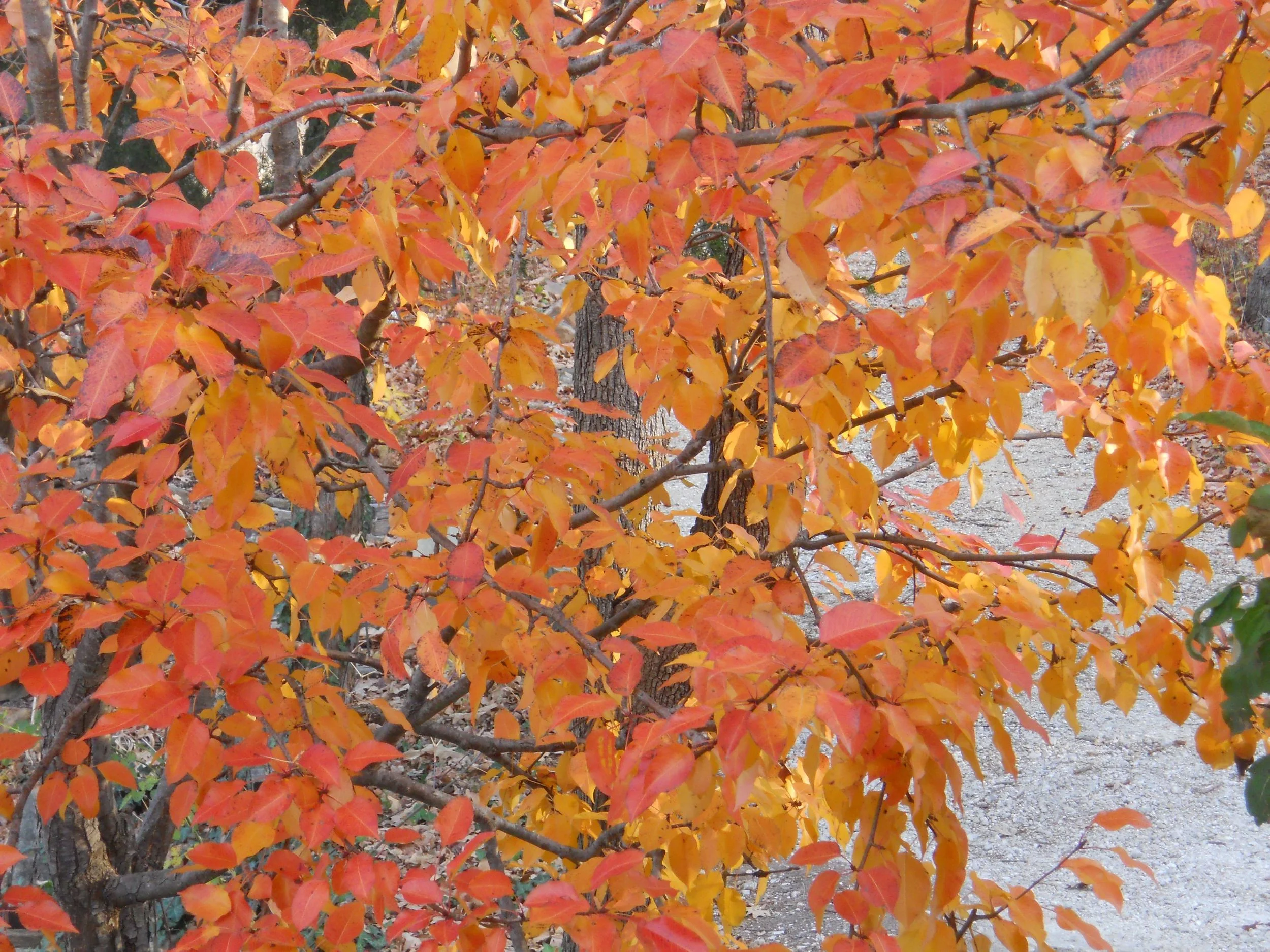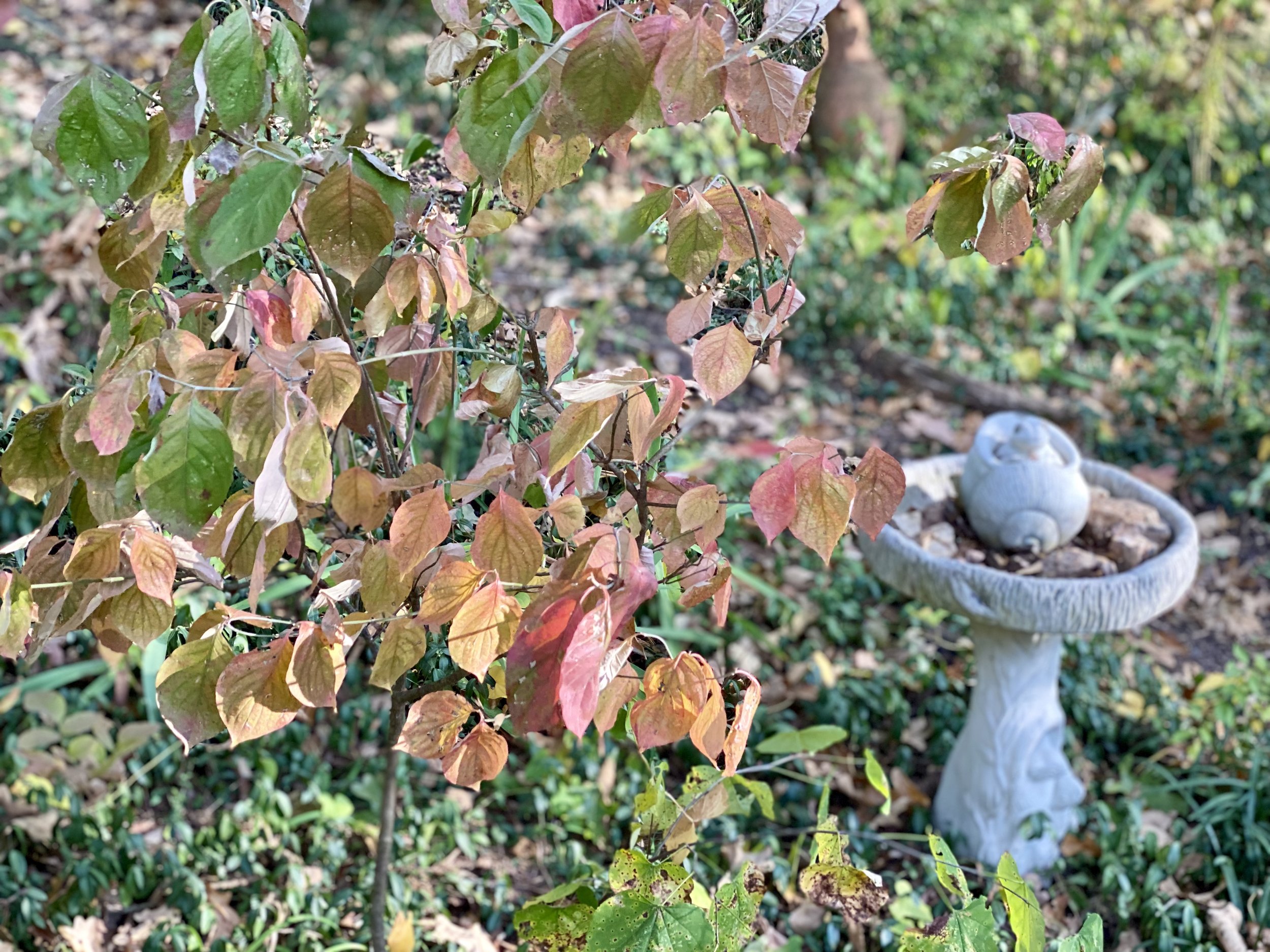Why Leaves Change Color
/even native dogwoods are struggling through drought. (charlotte ekjer wiggins photo)
Why Leaves Change Color in Fall
I used to be the answer desk for when leaves change color in Missouri. A popular tourist draw, communities would plan fall and pumpkin festivals with apple cider drinks and craft shows.
Now retired from that job, I still enjoy the fall changing of leaf colors.
Trees change color in the fall due to a combination of factors, including shorter days, cooler temperatures, and less sunlight. As the days get shorter, trees begin to produce less chlorophyll, the green pigment that allows them to absorb sunlight and photosynthesize. As chlorophyll levels decrease, the other pigments in the leaves, such as carotenoids and anthocyanins, become more visible.
Carotenoids are yellow, orange, and brown pigments that are present in leaves throughout the growing season. However, they are masked by the green chlorophyll.
In fall, as chlorophyll breaks down, the carotenoids become more visible, giving leaves their yellow and orange hues.
Anthocyanins are red, purple, and blue pigments that are produced in leaves in response to cool temperatures, bright light, and stress. As the weather cools in fall and the days get shorter, trees produce more anthocyanins. This gives leaves their striking red, purple, and crimson colors.
another fall color in native flowering dogwoods, purple. (charlotte ekker wiggins photo)
Here are 9 examples of tree leaves and their fall color:
Sugar maple: Red, orange, and yellow
Red maple: Red, orange, and purple
Oak: Red, orange, brown, and yellow
Hickory: Yellow, orange, and brown
Ash: Yellow, orange, and purple
Birch: Yellow, orange, and red
Sweetgum: Red, orange, and yellow
Dogwood: Red, purple, and yellow
Sassafras: Yellow, orange, and red
The intensity and variety of fall colors vary from year to year, depending on weather conditions. Continued drought can cause leaves to fall earlier without noting a color change.
Fall foliage is a beautiful reminder of the changing seasons. It is also a sign that trees are preparing for winter. The leaves will eventually fall from trees, leaving the branches bare. This helps to conserve water and energy during winter months.
Charlotte













